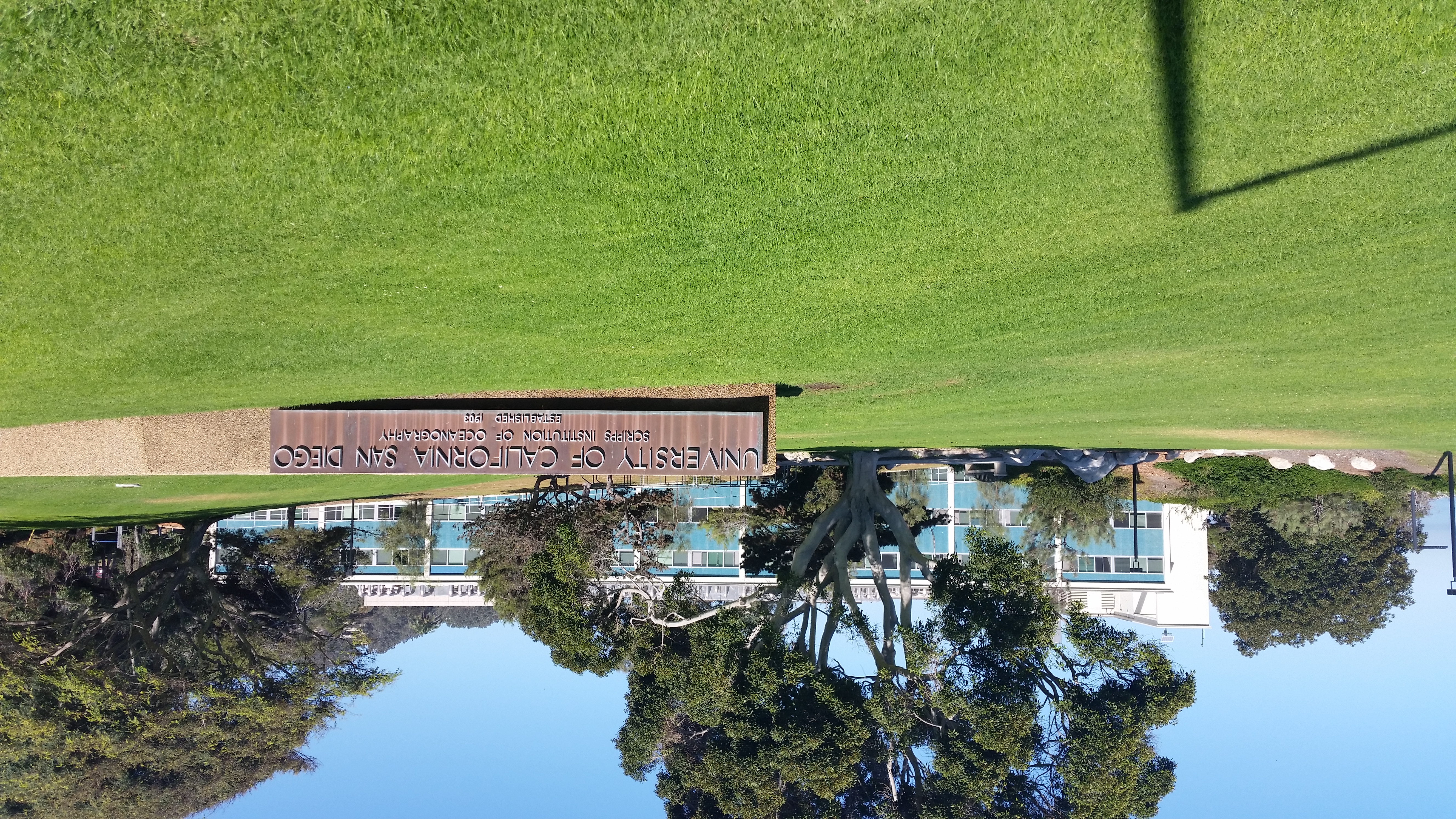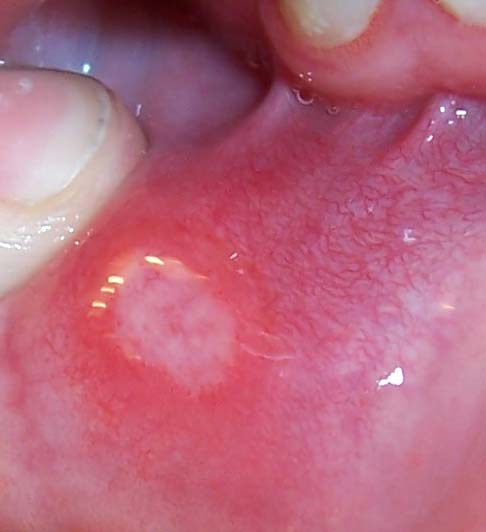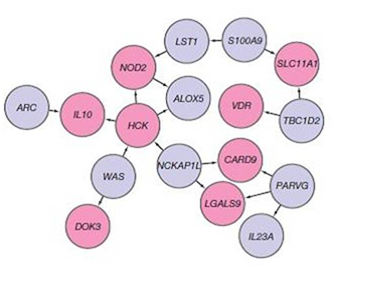|
Allen Institute
The Allen Institute is a non-profit, bioscience research institute located in Seattle. It was founded by billionaire philanthropist Paul Allen, Paul G. Allen in 2003. The Allen Institute conducts large-scale Basic research, basic science research studying the brain, cells and immune system in an effort to accelerate science and disease research. The organization practices open science, in that they make all their data and resources publicly available for researchers to access. Scientific Focus The Allen Institute's research is focused on neuroscience, through the Allen Institute for Brain Science, founded in 2003, Allen Institute for Neural Dynamics, founded in 2021; cell biology, through the Allen Institute for Cell Science, founded in 2014; broad areas of bioscience and medical research, through Paul G. Allen Frontiers Group, The Paul G. Allen Frontiers Group, founded in 2016; and human immunology, through the Allen Institute for Immunology, founded in 2018. The Paul G. Allen ... [...More Info...] [...Related Items...] OR: [Wikipedia] [Google] [Baidu] |
Nonprofit
A nonprofit organization (NPO), also known as a nonbusiness entity, nonprofit institution, not-for-profit organization, or simply a nonprofit, is a non-governmental (private) legal entity organized and operated for a collective, public, or social benefit, as opposed to an entity that operates as a business aiming to generate a Profit (accounting), profit for its owners. A nonprofit organization is subject to the non-distribution constraint: any revenues that exceed expenses must be committed to the organization's purpose, not taken by private parties. Depending on the local laws, charities are regularly organized as non-profits. A host of organizations may be non-profit, including some political organizations, schools, hospitals, business associations, churches, foundations, social clubs, and consumer cooperatives. Nonprofit entities may seek approval from governments to be Tax exemption, tax-exempt, and some may also qualify to receive tax-deductible contributions, but an enti ... [...More Info...] [...Related Items...] OR: [Wikipedia] [Google] [Baidu] |
Induced Pluripotent Stem Cell
Induced pluripotent stem cells (also known as iPS cells or iPSCs) are a type of pluripotent stem cell that can be generated directly from a somatic cell. The iPSC technology was pioneered by Shinya Yamanaka and Kazutoshi Takahashi in Kyoto, Japan, who together showed in 2006 that the introduction of four specific genes (named Myc, Oct-4, Oct3/4, Sox2 and Klf4), collectively known as Yamanaka factors, encoding transcription factors could convert somatic cells into pluripotent stem cells. Shinya Yamanaka was awarded the 2012 Nobel Prize along with Sir John Gurdon "for the discovery that mature cells can be reprogrammed to become pluripotent." Pluripotent stem cells hold promise in the field of regenerative medicine. Because they can propagate indefinitely, as well as give rise to every other cell type in the body (such as neurons, heart, pancreatic, and liver cells), they represent a single source of cells that could be used to replace those lost to damage or disease. The most we ... [...More Info...] [...Related Items...] OR: [Wikipedia] [Google] [Baidu] |
University Of California, San Diego
The University of California, San Diego (UC San Diego in communications material, formerly and colloquially UCSD) is a public university, public Land-grant university, land-grant research university in San Diego, California, United States. Established in 1960 near the pre-existing Scripps Institution of Oceanography in La Jolla, UC San Diego is the southernmost of the ten campuses of the University of California. It offers over 200 undergraduate and graduate degree programs, enrolling 33,096 undergraduate and 9,872 graduate students, with the second largest student housing capacity in the nation. The university occupies near the Pacific coast. UC San Diego consists of 12 undergraduate, graduate, and professional schools as well as 8 undergraduate residential colleges. The university operates 19 organized research units as well as 8 School of Medicine research units, 6 research centers at Scripps Institution of Oceanography, and 2 multi-campus initiatives. UC San Diego is als ... [...More Info...] [...Related Items...] OR: [Wikipedia] [Google] [Baidu] |
Fred Hutchinson Cancer Research Center
The Fred Hutchinson Cancer Center, formerly known as the Fred Hutchinson Cancer Research Center and also known as Fred Hutch or The Hutch, is a cancer research institute established in 1975 in Seattle, Washington (state), Washington. History The center grew out of the Pacific Northwest Diabetes Research Institute, Pacific Northwest Research Foundation, founded in 1956 by William B. Hutchinson (physician), William B. Hutchinson (1909–1997). The Foundation was dedicated to the study of heart surgery, cancer, and diseases of the endocrine system. Hutchinson's younger brother Fred Hutchinson, Fred (1919–1964) was a Major League Baseball, major league pitcher and Manager (baseball), manager who died of lung cancer at age 45. The next year, William Hutchinson established the Fred Hutchinson Cancer Research Center as a division of the Pacific Northwest Research Foundation.Louis Fiset, December 30, 2004 for HistoryLink: The Free, Online Encyclopedia of Washington State HistorHutchi ... [...More Info...] [...Related Items...] OR: [Wikipedia] [Google] [Baidu] |
Benaroya Research Institute
Benaroya Research Institute (BRI) is a Seattle, Washington, non-profit organization that conducts medical research on diseases and immune disorders, including autoimmune disease. It is affiliated with Virginia Mason Health System, and is located on the campus of Virginia Mason Medical Center. Much of BRI's research aims to understand how immune cells function and why they malfunction to cause disease. BRI researchers has studied on how immune cells contribute to rheumatoid arthritis, type 1 diabetes, multiple sclerosis, and other diseases. BRI uses translational research and clinical trials. History BRI was founded in 1956 as the Virginia Mason Research Center. In 1985, Gerald Nepom became BRI's director and established its immunology research program. In 1999, BRI moved into a new, 100,000 square-foot building at the corner of Seneca and 9th Avenue, in Seattle's First Hill neighborhood. The building was named the Benaroya Research Institute in honor of donations from the Benar ... [...More Info...] [...Related Items...] OR: [Wikipedia] [Google] [Baidu] |
Ulcerative Colitis
Ulcerative colitis (UC) is one of the two types of inflammatory bowel disease (IBD), with the other type being Crohn's disease. It is a long-term condition that results in inflammation and ulcers of the colon and rectum. The primary symptoms of active disease are abdominal pain and diarrhea mixed with blood ( hematochezia). Weight loss, fever, and anemia may also occur. Often, symptoms come on slowly and can range from mild to severe. Symptoms typically occur intermittently with periods of no symptoms between flares. Complications may include abnormal dilation of the colon ( megacolon), inflammation of the eye, joints, or liver, and colon cancer. The cause of UC is unknown. Theories involve immune system dysfunction, genetics, changes in the normal gut bacteria, and environmental factors. Rates tend to be higher in the developed world with some proposing this to be the result of less exposure to intestinal infections, or to a Western diet and lifestyle. The remova ... [...More Info...] [...Related Items...] OR: [Wikipedia] [Google] [Baidu] |
Crohn's Disease
Crohn's disease is a type of inflammatory bowel disease (IBD) that may affect any segment of the gastrointestinal tract. Symptoms often include abdominal pain, diarrhea, fever, abdominal distension, and weight loss. Complications outside of the gastrointestinal tract may include anemia, skin rashes, arthritis, uveitis, inflammation of the eye, and fatigue (medical), fatigue. The skin rashes may be due to infections, as well as pyoderma gangrenosum or erythema nodosum. Bowel obstruction may occur as a complication of chronic inflammation, and those with the disease are at greater risk of colon cancer and small bowel cancer. Although the precise causes of Crohn's disease (CD) are unknown, it is believed to be caused by a combination of environmental, Immunity (medical), immune, and bacterial factors in genetically susceptible individuals. It results in a Immune-mediated inflammatory diseases, chronic inflammatory disorder, in which the body's immune system defends the gastrointesti ... [...More Info...] [...Related Items...] OR: [Wikipedia] [Google] [Baidu] |
Inflammatory Bowel Disease
Inflammatory bowel disease (IBD) is a group of inflammatory conditions of the colon and small intestine, with Crohn's disease and ulcerative colitis (UC) being the principal types. Crohn's disease affects the small intestine and large intestine, as well as the mouth, esophagus, stomach and the anus, whereas UC primarily affects the colon and the rectum. Signs and symptoms In spite of Crohn's and UC being very different diseases, both may present with any of the following symptoms: abdominal pain, diarrhea, rectal bleeding, severe internal cramps/muscle spasms in the region of the pelvis and weight loss. Anemia is the most prevalent extraintestinal complication of inflammatory bowel disease (IBD). Associated complaints or diseases include arthritis, pyoderma gangrenosum, primary sclerosing cholangitis, and non-thyroidal illness syndrome (NTIS). Associations with deep vein thrombosis (DVT) and bronchiolitis obliterans organizing pneumonia (BOOP) have also been reported. ... [...More Info...] [...Related Items...] OR: [Wikipedia] [Google] [Baidu] |
Melanoma
Melanoma is the most dangerous type of skin cancer; it develops from the melanin-producing cells known as melanocytes. It typically occurs in the skin, but may rarely occur in the mouth, intestines, or eye (uveal melanoma). In very rare cases melanoma can also happen in the lung which is known as primary pulmonary melanoma and only happens in 0.01% of primary lung tumors. In women, melanomas most commonly occur on the legs; while in men, on the back. Melanoma is frequently referred to as malignant melanoma. However, the medical community stresses that there is no such thing as a 'benign melanoma' and recommends that the term 'malignant melanoma' should be avoided as redundant. About 25% of melanomas develop from nevus, moles. Changes in a mole that can indicate melanoma include increaseespecially rapid increasein size, irregular edges, change in color, itchiness, or nevus#Classification, skin breakdown. The primary cause of melanoma is ultraviolet light (UV) exposure in th ... [...More Info...] [...Related Items...] OR: [Wikipedia] [Google] [Baidu] |
Multiple Myeloma
Multiple myeloma (MM), also known as plasma cell myeloma and simply myeloma, is a cancer of plasma cells, a type of white blood cell that normally produces antibody, antibodies. Often, no symptoms are noticed initially. As it progresses, bone pain, anemia, Kidney failure, renal insufficiency, and infections may occur. Complications may include hypercalcemia and amyloidosis. The cause of multiple myeloma is unknown. Risk factors include obesity, radiation exposure, family history, age and certain chemicals. There is an increased risk of multiple myeloma in certain occupations. This is due to the occupational exposure to aromatic hydrocarbon solvents having a role in causation of multiple myeloma. Multiple myeloma is the result of a multi-step malignant transformation, and almost universally originates from the pre-malignant stage monoclonal gammopathy of undetermined significance (MGUS). As MGUS evolves into MM, another pre-stage of the disease is reached, known as Smouldering ... [...More Info...] [...Related Items...] OR: [Wikipedia] [Google] [Baidu] |
Gene Drive
A gene drive is a natural process and technology of genetic engineering that propagates a particular suite of genes throughout a population by altering the probability that a specific allele will be transmitted to offspring (instead of the Mendelian 50% probability). Gene drives can arise through a variety of mechanisms. They have been proposed to provide an effective means of genetically modifying specific populations and entire species. The technique can employ adding, deleting, disrupting, or modifying genes. Proposed applications include exterminating insects that carry pathogens (notably mosquitoes that transmit malaria, dengue, and zika pathogens), controlling invasive species, or eliminating herbicide or pesticide resistance. As with any potentially powerful technique, gene drives can be misused in a variety of ways or induce unintended consequences. For example, a gene drive intended to affect only a local population might spread across an entire species. Gene driv ... [...More Info...] [...Related Items...] OR: [Wikipedia] [Google] [Baidu] |
Regeneration (biology)
Regeneration in biology is the process of renewal, restoration, and tissue growth that makes genomes, cell (biology), cells, organisms, and ecosystems Resilience (ecology), resilient to natural fluctuations or events that cause disturbance or damage. Every species is capable of regeneration, from bacteria to humans. Regeneration can either be complete where the new tissue is the same as the lost tissue, or incomplete after which the necrotic tissue becomes Fibrosis, fibrotic. At its most elementary level, regeneration is mediated by the molecular processes of gene regulation and involves the cellular processes of cell proliferation, morphogenesis and cell differentiation. Regeneration in biology, however, mainly refers to the Morphogenesis, morphogenic processes that characterize the phenotypic plasticity of Phenotypic trait, traits allowing multi-cellular organisms to repair and maintain the integrity of their physiological and morphological states. Above the genetic level, rege ... [...More Info...] [...Related Items...] OR: [Wikipedia] [Google] [Baidu] |








